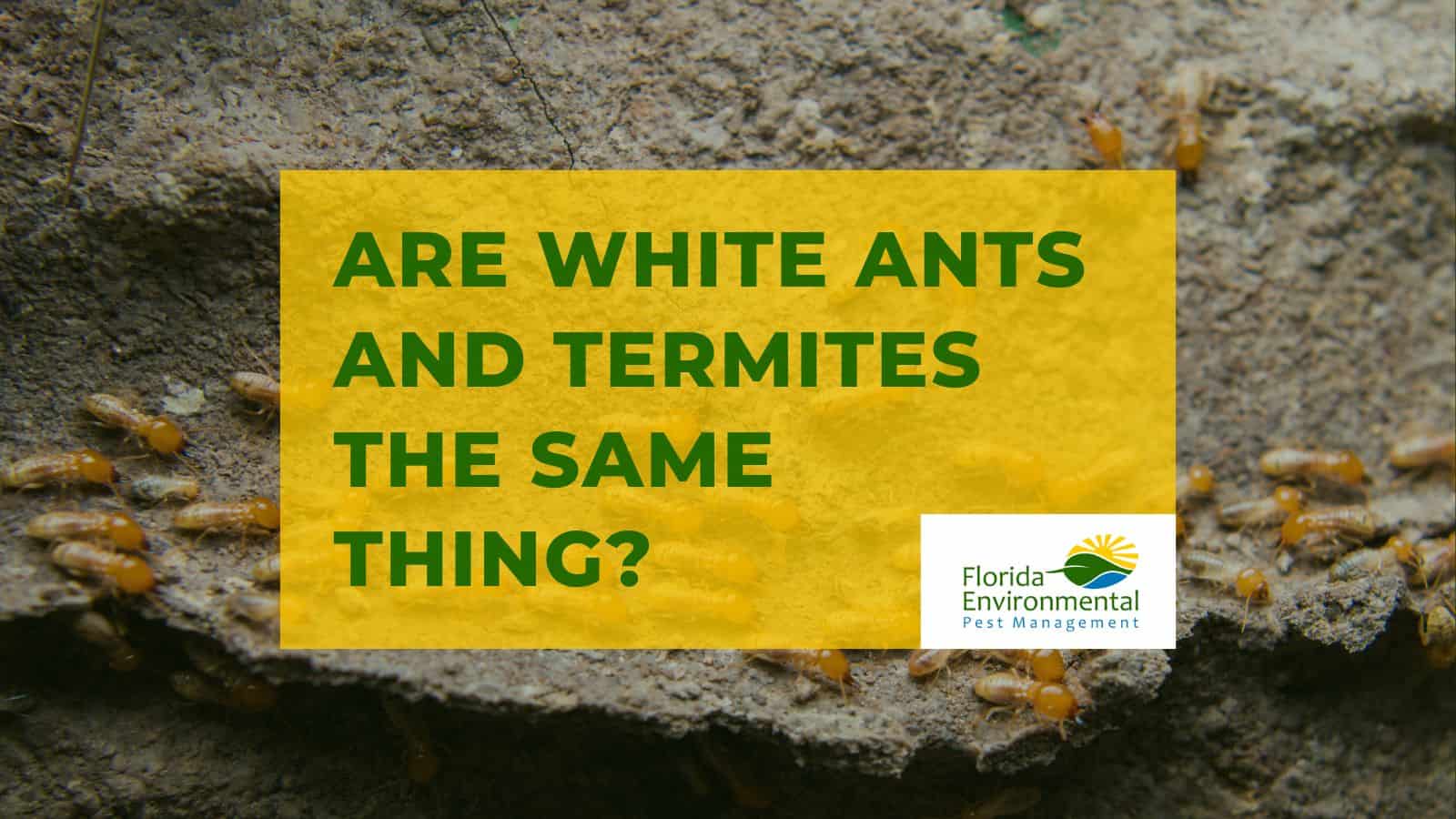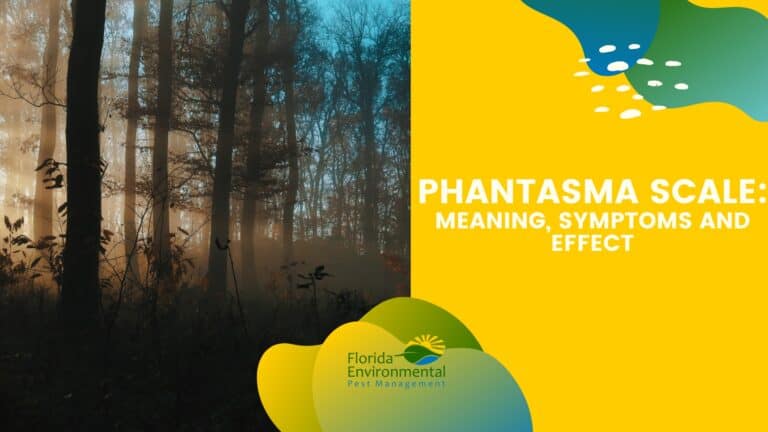White ants and termites are often used interchangeably, but are they truly the same? White ants are a term commonly used to refer to termites, which are social insects known for their wood-feeding habits. Despite the misleading name, termites are not ants at all but belong to the order Isoptera. They play a crucial role in ecosystems but can also be destructive pests in human-made structures.
When it comes to treatment options, addressing a white ant (termite) infestation requires specialized knowledge and techniques. Effective treatment often involves the use of chemical barriers, baiting systems, or physical barriers to prevent termites from accessing a structure.
Are White Ants and Termites the Same Thing?
Yes, White Ants and Termites are essentially the same, with “white ant” being another term for a termite. Although often called white ants, they differ from general ants, requiring different treatment methods.
Termites can cause extensive damage within a short period. It’s essential to differentiate between termites and regular ants, as only termites can cause structural damage. Identifying physical differences, such as straight antennae and rectangular bodies, helps distinguish termites from ants.
Why Do People Mistake Termites for White Ants?
People often mistake termites for white ants due to their similar appearance and the common colloquial name used to describe termites in various parts of the world. While termites are not ants they share some superficial similarities with ants, such as their social structure and behavior.
To differentiate between termites and ants, one can observe physical traits such as body color, waist shape, and antennae. Termite workers are transparent, light-colored, or creamy white, while ant workers are reddish or dark-colored. Termites have straight waists and broad thoraxes, whereas ants have narrow waists and constricted thoraxes. Additionally, termites avoid light and are rarely noticed unless their nest is disturbed, while ants are frequently seen foraging for food in the open.
How Do I Know if I Have Termites or Ants?
To distinguish between termites and ants you can examine their physical traits. Termites have straight, beaded antennae, a rectangular body without a waist, and wings that are equal in size and longer than their body, while ants have elbowed antennae, a pinched waist, and wings of varying sizes.
Termites are attracted to cellulose-rich materials like wood and avoid light, while ants are predatory and often visible foraging for food. If uncertain, look for signs like tunnel openings in wood to determine if termites or ants are present.
What’s the Difference Between Termites and Ants?
Termites are a distinct group of insects belonging to the order Isoptera, while ants belong to the order Hymenoptera. Here is a detailed response on the difference between termites and white ants:
Termites are more closely related to cockroaches. They are wood-eating insects that live in colonies with a caste system, comprising workers, soldiers, and reproductive individuals. Termites have straight antennae and a broad waistline, and their bodies are pale or creamy white in color, hence the name “white ants.”
On the other hand, ants belong to the order Hymenoptera, which includes wasps and bees. Unlike termites, ants have a distinct narrow waist, elbowed antennae, and compound eyes. Ant workers are typically reddish, brown, or black in color, while termite workers are pale or translucent. Ants are scavengers and feed on a variety of foods, including other insects, while termites primarily consume wood and cellulose-based materials.
While both termites and ants can cause structural damage to buildings, termites are generally considered more destructive due to their wood-eating habits. Termite infestations can go undetected for years, causing significant damage to the wooden structures of a building before becoming visible. Ant infestations, on the other hand, are usually easier to detect and manage.
Here are the differences between ants and termites presented in a table format:
| Feature | Ants | Termites |
| Body Shape | Narrow waist | Thick waist, rectangular body |
| Antennae | Bent | Straight, beaded |
| Wings | Front wings longer than hind wings | Front and hind wings equal, twice body length |
| Habitat Preference | Damp/decaying wood, foraging scavengers | Chew through healthy wood, build mud tubes |
| Damage Behavior | Burrow through wood, leave smooth tunnels | Eat the wood they nest in, cause structural damage |
| Nesting Preference | Inside or around wood, not eating it | Chew galleries into wood to create a home |
How Do I Get Rid of White Ants or Termites?
When dealing with a termite or white ant infestation at home, it’s essential to employ effective methods for eradication. Here are some proven strategies to help you get rid of these destructive pests.
Here are some options to get rid of termites from home:
- Apply termiticide treatment for subterranean termites.
- Utilize essential oils like orange and neem oils for dry wood termites.
- Mix white vinegar and lemon for a DIY termite-killing solution.
- Consider professional pest control services for effective termite removal.
- Release nematodes into the soil to target termite larvae.
- Use salt solution to dehydrate and kill termites effectively.
- Contact a professional to identify termite types and provide suitable treatment.
- Repair damaged wood and eliminate moisture sources to prevent future infestations.
- Consider termite bait stations as an effective option for termite control.
- Apply soil-applied barrier treatment using specific termiticides for infestations.
What Is the Best Treatment for White Ants?
The most effective treatment for white ants (termites) combines several methods. Boric acid is a popular natural option that can eliminate termite colonies. Diatomaceous earth, neem oil, and vinegar also have insecticidal properties against termites. Salt barriers around the home’s foundation can deter termites from entering. Professional liquid termiticides like Premise provide long-lasting prevention and control.
What Do Household Termites Look Like?
Household termites typically have soft, pale-colored bodies ranging from white to light brown. Worker termites appear smaller, measuring around 1/4 to 1/2 inch long with straight antennae. Reproductive termites like queens and kings can grow over 1 inch in length. Depending on their type, age, and species, termites may vary slightly in shades from white to dark brown or black.
What are the Signs of Termite Infestation on Your Property?
Key signs of termite infestation include wood that sounds hollow when tapped, buckling wood floors, stuck windows/doors, maze-like patterns in walls, mud tubes along surfaces, discarded termite wings, and the presence of swarmers (flying termites). Other indicators are cracked paint resembling water damage, sagging ceilings/floors, and piles of wood-colored droppings called frass.
How Do I Protect My House from White Ants?
To protect against white ants (termites), eliminate wood-to-soil contact around your home’s foundation. Ensure proper drainage away from the house, fix any leaks, and remove excessive moisture sources like mulch or vegetation touching the exterior. Apply a liquid termiticide barrier treatment by a professional. Consider using termite-resistant building materials when constructing or renovating.
What Kills Termites Instantly?
While there is no true instant termite killer, some effective methods can rapidly eliminate termites. Sprinkling boric acid powder disrupts termites’ nervous systems. Diatomaceous earth powder causes termites to dehydrate rapidly. Natural ways to kill termite like using strong plant oils like neem oil or orange oil can suffocate termites. Professional liquid termiticides like imidacloprid provide a quick and thorough elimination.
How to Tell the Difference Between Carpenter Ant Damage and Termite Damage?
Termite damage looks messy and uneven, as termites aggressively chew through wood, leaving behind mud trails. Carpenter ant damage appears more precise, as they excavate smooth galleries to nest in rather than consuming the wood itself. Termites cause quicker, more widespread destruction compared to the slower-paced carpenter ant damage over many years.





